Photo above by Arne Hückelheim
My buddy Dan and I have recently returned from a ramble around Asia.
We spent most of our time in West Bengal, in the northeast of India. I’d like to tell you about an experience of the greatest interest to us – a day riding the Darjeeling Himalayan Railway – from the city of Darjeeling (elevation 6700′) in the Himalayas to Siliguri Junction (elevation 328′) in the plains. Siliguri Junction is three hundred miles north of Calcutta; its very name brings to mind that dear old imperialist, Rudyard Kipling, who wrote so fondly of these parts.
The railway is also called the “Darjeeling Toy Train”, and is recognized as a UNESCO World Heritage Site. At Darjeeling station is a bronze plaque placed by the “Hon’ble Minister for Railways Miss Matama Banerjee”, on 26 November, 2000. The DHR is declared to be “Dedicated to the people of the world”. The thought warms my heart.
At the Darjeeling station is a notice board identifying Passenger Amenities Available. Note is made of smart features such as the Upper Class Waiting Room, urinals (5), latrines (3), posted timetables, a tea stall, a bookshop -and to top it all off – “Lighting.”
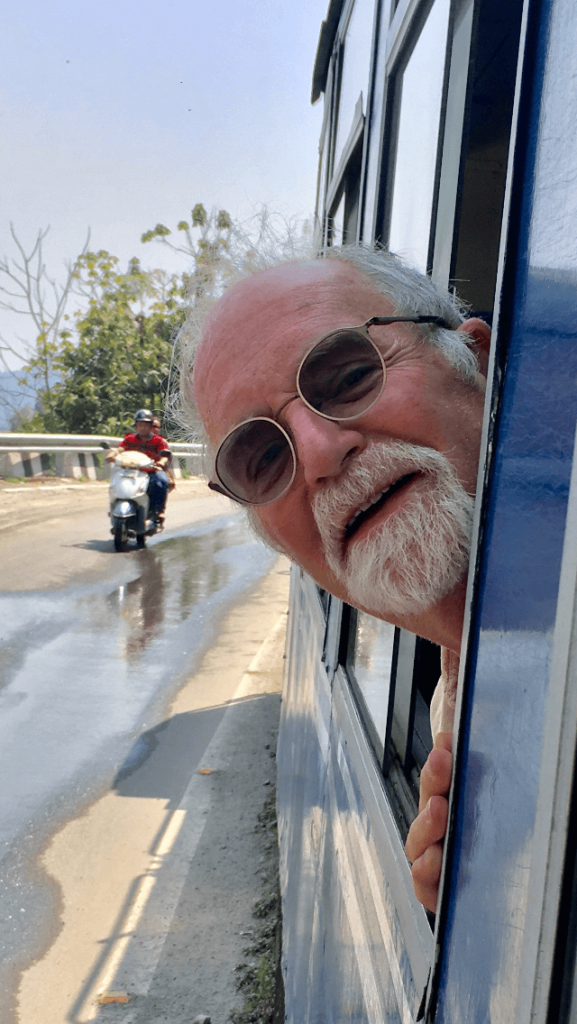
Signs festooned the place; one noted “PASTING POSTER IS A CRIMINAL OFFENCE”; another reminded us that “CLEANLINESS IS NEXT TO GODLINESS.” The DHR is clearly a no-nonsense outfit. Apparently the Indian Railways babus expect possible offenders to be proficient in English.
India is mad about signs…. they’re on every visible vertical surface. I believe that once a sign is posted, it’s a serious offence – probably bad karma – to take it down. Hence, there are discoloured, peeling signs everywhere you go, often layers deep – many referring to businesses that have long since passed into history.
Let’s look at some highlights of the of railway’s extraordinary history. Calcutta was the capital of British India from 1773 to 1911. It was full of civil servants whose productivity declined abruptly during the murderous pre-monsoon heat. Naturally, the idea arose among senior officials that it would be good to be able to escape into the hills – say, Darjeeling – to cool off for a bit. One could bring a brief-case; the change was bound to do wonders for productivity.
In the 1800s it took two weeks to make the punishing journey from Calcutta to Darjeeling. Every type of conveyance was required – train, ferry, bullock cart, tonga, rickshaw – you name it. Rising to the challenge, an agent of the Eastern Bengal Railway named Franklin Prestage had an idea: he envisioned something then unheard-of: a rail link from the plains to the mountains. Happily, his idea met with favour by Bengal’s Lieutenant Governor, Sir Ashley Eden, and plans were made to proceed.
Accordingly, between 1879 and 1881, track was laid between New Jalpaiguri and Darjeeling. To save space and material the tracks were placed only two feet apart – a foot narrower than usual. This ‘narrow-gauge’ railway turned out to be an engineering marvel, incorporating an ingenious system of zig-zags, loops and spirals to deal with otherwise impossible grades. Her Royal Highness, the Empress of India, the great Queen Victoria herself, knighted Prestage for his efforts.
On July 4th, 1881 the first train rolled proudly into Darjeeling, blasting its whistle the whole time. India does love a party; the crowds must have roared themselves hoarse. Some say the sounds of that mighty celebration still echo through the mountains – all the way to Kathmandu. In subsequent years, the railway has become a huge part of everyday life in the towns along its route. The DHR is now a source of enormous pride in the region, and a huge tourist attraction.
Today, the locomotives are a motley mix of steam and diesel units. The antique steam locos (B Class) are utterly charming, like big, greasy, sooty toys. They were built by Sharp, Stewart and Company of Glasgow, between 1889 and 1925. They require ceaseless repair and rebuilding, but thanks to the elite maintenance team, they are lovingly cared-for, and still do the job in matchless style.
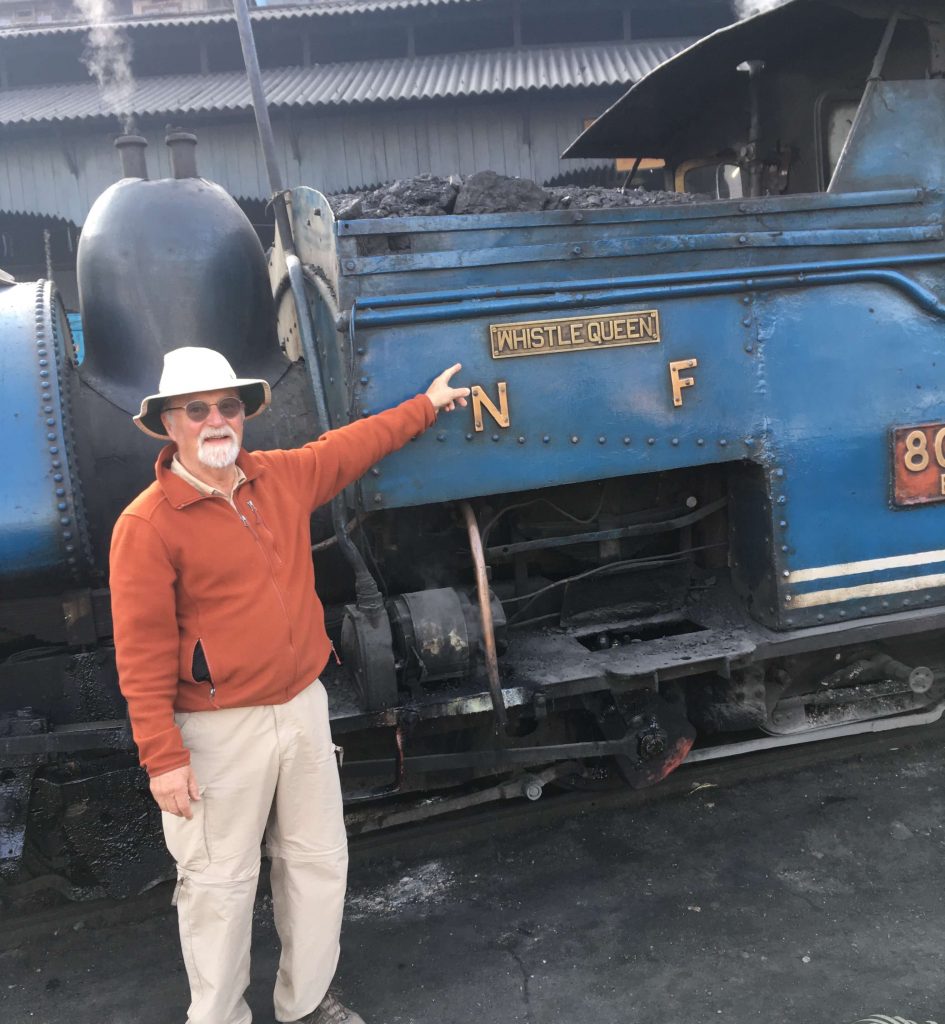
So it was that at 0830 hours on Friday, March 16, 2019, Dan and I hopped aboard and took our seats. We weren’t sure what class we were, so we just sat anywhere. The loco fired up with quite a fuss – a great chugging, huffing, puffing, wheezing and whistling – all enveloped in billows of gritty black smoke. We lurched bravely out of the station; we were excited to be on our way. Knowing that the train averages less than ten miles an hour only promised to prolong the fun.
The tracks parallel and often cross the highway known as Hill Cart Road, starting in Darjeeling and ending in the plain – without benefit of signals or barriers of any kind. As we set out, our wee train squeezed past stooped pedestrians in flip-flops with great loads strapped to their foreheads, shiny-faced kids in school uniforms, battered cars, trucks and motorbikes. Cows, donkeys, dogs and hens ran for their lives. We could have lifted a freshly-plucked chicken or a bunch of bananas from a stall at arm’s length. Many people looked up, waved and smiled at us; one girl threw us a kiss. Dan thought it was for him….but I think he was dreaming. We agreed on a 50/50 split.
We chugged along with the windows open. Most of the time we seemed on the verge of some bottomless precipice as we competed for space with pedestrians, idlers, livestock, traffic and construction equipment. At Agony Point, a 360 degree loop north of Tindharia, we peered into the ultimate abyss – rocky and forested, stretching away thousands of feet below. Our hearts raced and our hair stood on end – but in an entirely pleasant way. It was grand.
The train passed through plantations of tea and cardamom, forests of maple, chestnut, oak, walnut and cedar, as well as orchards of pear and cherry. Brilliant blooms flashed by – rhododendrons, bougainvillea, cream magnolias, orchids. The train wound its way steadily downhill and southward, passing through towns with intriguing names: Ghoom, Sonada, Tung, Kurseong, Rangtong, Rangbul…
At Kurseong station, I left the train in search of two cups of that magical potion India runs on –chai. I found a shop nearby and ran in, panting. I got the chai, I paid up and then became alarmed when I saw the train pulling out of the station. I ran across a dusty traffic circle, got whistled at by an irate traffic cop, dodged a skinny dog, but somehow managed to hop aboard as the train gathered speed. Despite first-degree burns to both hands, I’d retained most of the precious chai. Dan and I savoured ours as long as we could. This is our idea of a good time. I have a firm opinion you can’t get a decent cup of chai anywhere but in India.
After eight hours of high-jinks of this sort, we finally rolled into Sigiluri Junction. We planned to spend the night there so we grabbed a rickshaw to our hotel. The day had been splendid in every way – a trip through a lunatic dreamscape of heights, depths, colours, smells and sounds. It was surely one of the most interesting, thrilling and enjoyable days of our lives. Two big thumbs up for the DHR. Try it yourself some time.
Toot-toot!
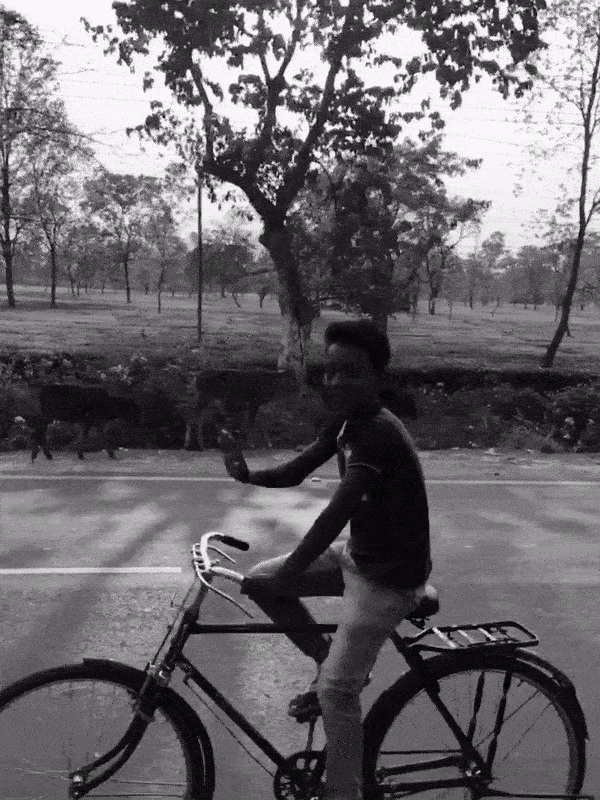


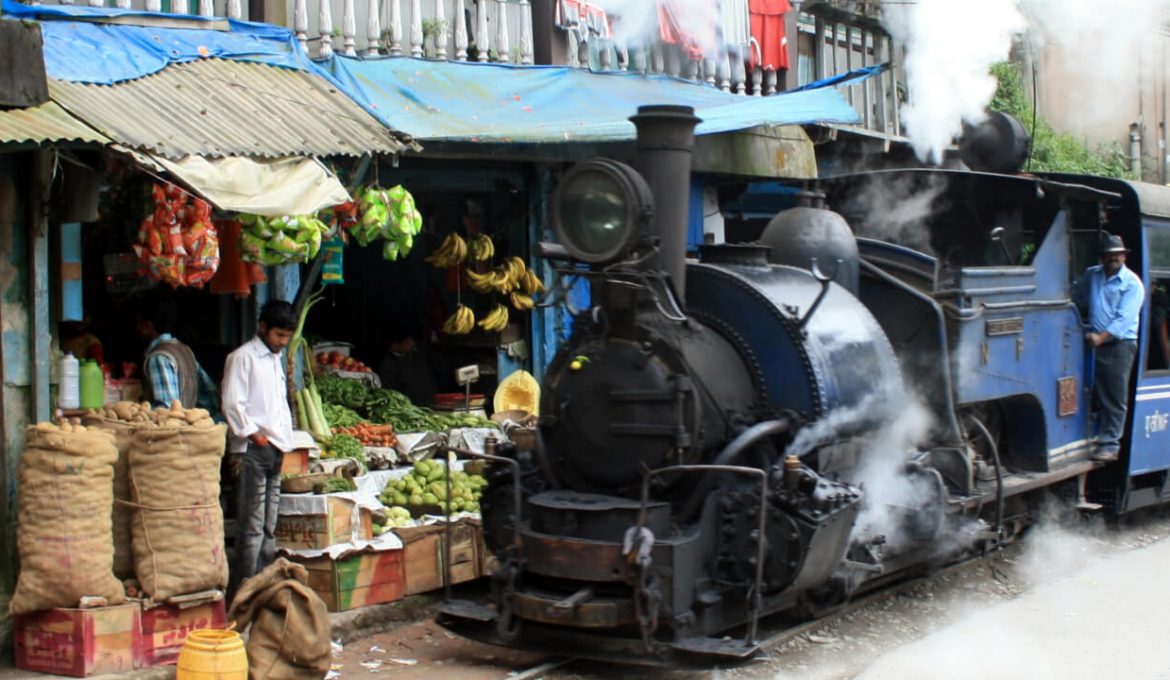
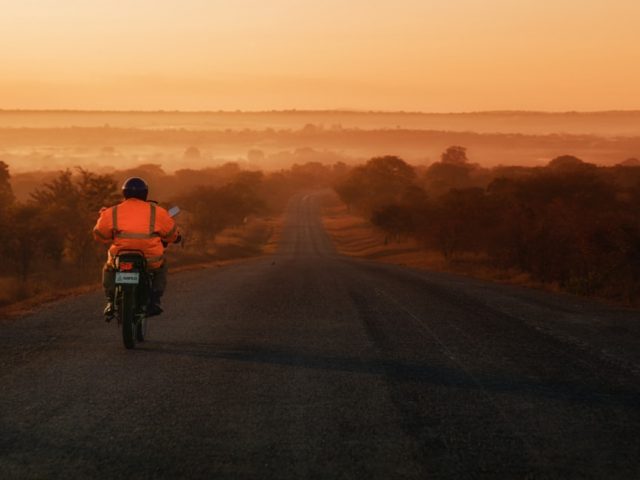
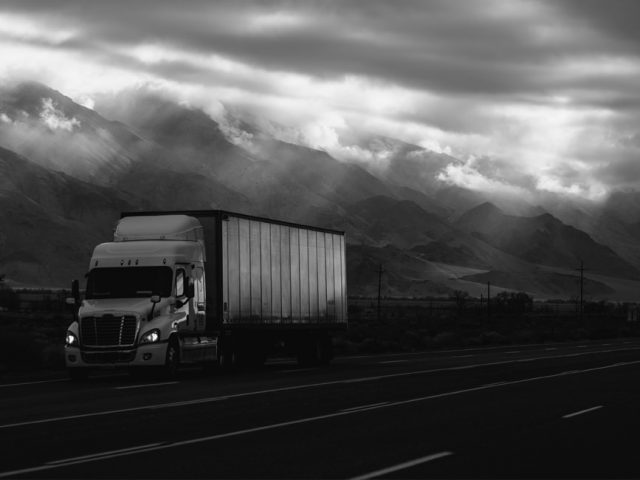
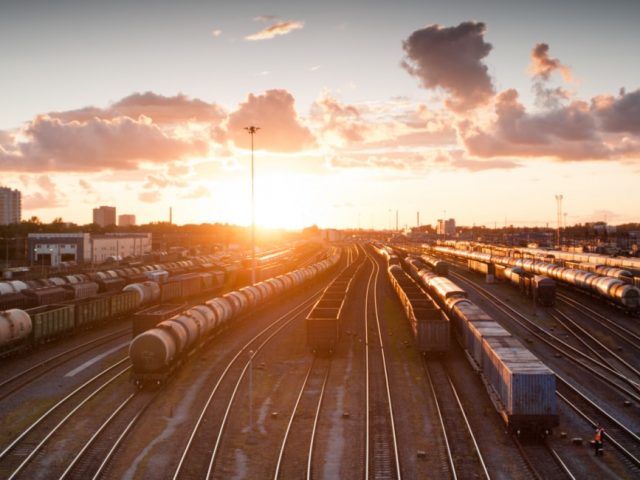
Facebook Comments